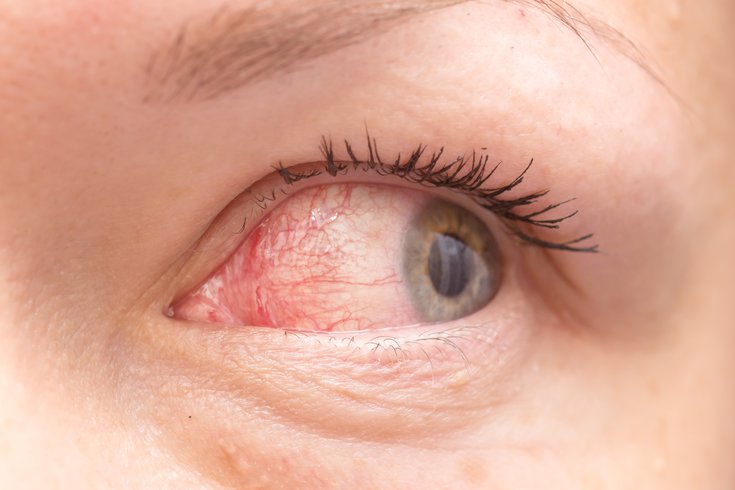
April 18, 2023
 Source/Image licensed by Ingram Image
Source/Image licensed by Ingram Image
The latest COVID-19 subvariant is causing pink eye, a symptom not previously associated with the coronavirus. It is more common among children, doctors say.
The latest COVID-19 subvariant, XBB.1.16, not only appears to be more contagious other subvariants, but it also causes a symptom not previously associated with the coronavirus: red, itchy eyes.
The subvariant, also known as "arcturus" has been identified in 29 countries, including the United States, the World Health Organization reports. In the U.S., XBB.1.5 remains most dominant omicron subvariant, but the percentage of COVID-19 cases caused by XBB.1.16 increased to 7.2% last week.
The new subvariant has an extra mutation in the spike protein that makes it more contagious, Dr. William Schaffner, an infectious diseases specialist at Vanderbilt University in Nashville, Tennessee, told Everyday Health. It also is more likely to cause fever and conjunctivitis – pink eye, especially in children.
"So far, the pink eye appears to last several days to a week, similar to the conventional viral pink eye," he said.
Conjunctivitis can be caused by viruses, bacteria or allergies. It is most commonly caused by an adenovirus, a virus that triggers flu- and cold-like symptoms. Other viruses, like herpes and the chickenpox virus, sometimes cause more severe conjunctivitis cases.
Common pink eye symptoms include:
• A pink or red color in the white of the eye
• Swelling of the conjunctiva, the thin layer that lines the white part of the eye and the eyelids
• Itchy, burning eyes
• Increased tear production or mucus discharge
People may feel like there is something in their eyes and they may have some crusting of the eyelids or eyelashes, according to the U.S. Centers for Disease Control and Prevention. People who wear contact lenses may find that their lenses don't fit as well as they normally do.
Mild cases can be treated with medication. The Mayo Clinic recommends using eye drops and applying cold or warm compresses to the affected eye several times a day. People should use a wet cloth to clean any discharge or crustiness from their eyelids. People who wear contacts are advised to discontinue using them until their symptoms resolve.
With more severe infection, antiviral medications may be used to treat viral conjunctivitis and antibiotics may be used to treat bacteria conjunctivitis. If pink eye is caused by allergies, eye drops for allergies can help ease symptoms.
People are advised to replace any eye makeup they were using before getting pink eye and to disinfect any hard contact lenses before reusing them. Doctors may advise people to throw out any soft contact lenses they were wearing before they got sick.
It is a good idea to get evaluated by a doctor to determine which type of conjunctivitis one has. Infants with pink eye are advised to see a pediatrician immediately.
People who initially treat conjunctivitis at home are advised to make an appointment with a health care provider if they develop eye pain, a sensitivity to light or blurred vision, or if their symptoms don't improve or worsen.
In the case of COVID-19-related conjunctivitis, experts say it rarely is the only symptom. It usually is accompanied by the more classic COVID-19 symptoms such as fever, cough and shortness of breath.
"If you've got red, itchy eyes, and you think it's allergies or just a cold, just take a COVID test to be sure," Dr. Allison Arwady, commissioner of the Chicago Department of Public Health told NBC5 in Illinois.
Experts say that pink eye shouldn't be a massive spreader of the coronavirus, but it could lead to more spread within close proximities due to people with the virus touching their eyes.
The best ways to prevent COVID-19 are to remain get vaccinated and boosted, wear a mask in public places in areas with high COVID-19 transmission, and to wash one's hands frequently, especially before and after touching one's face.